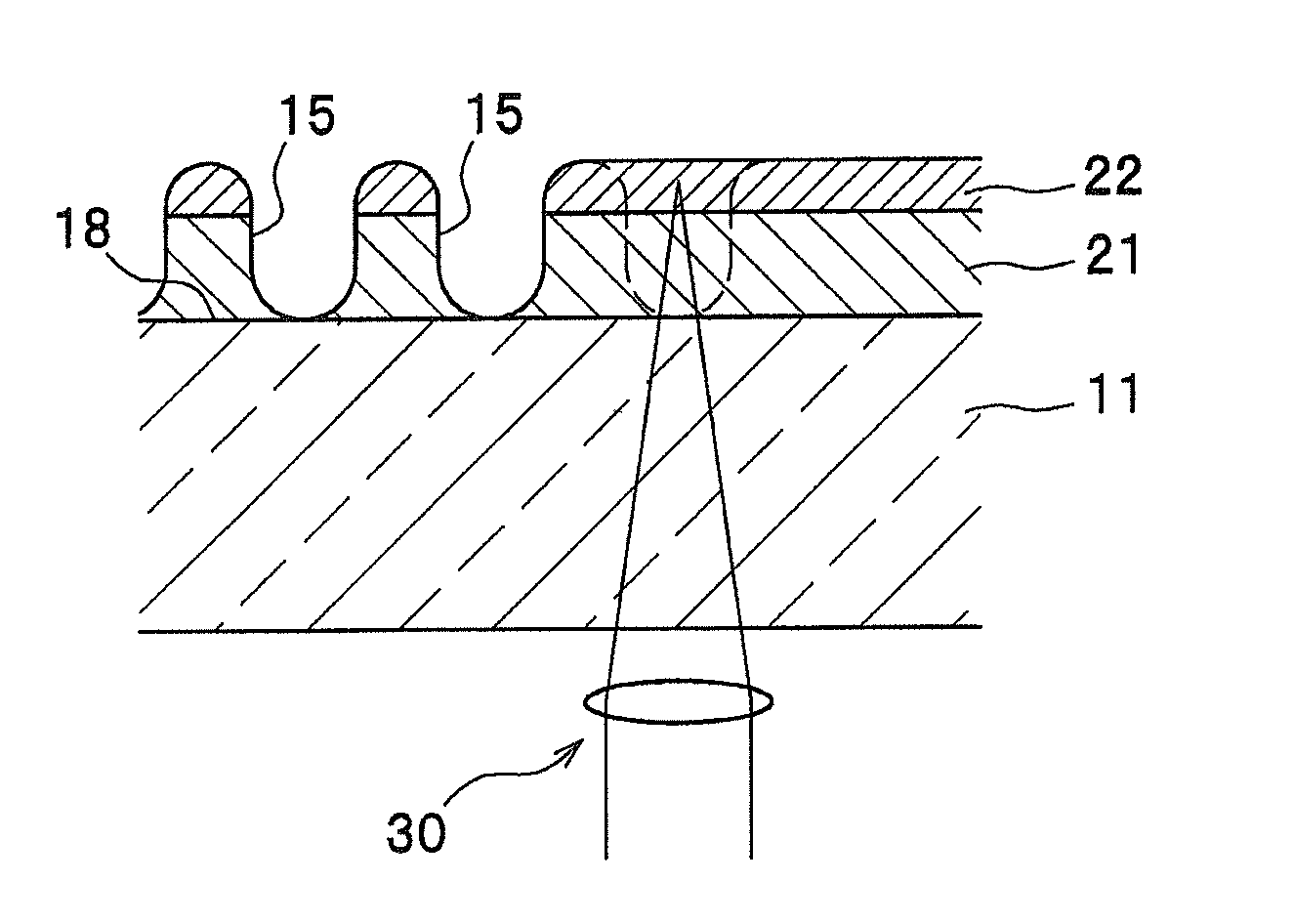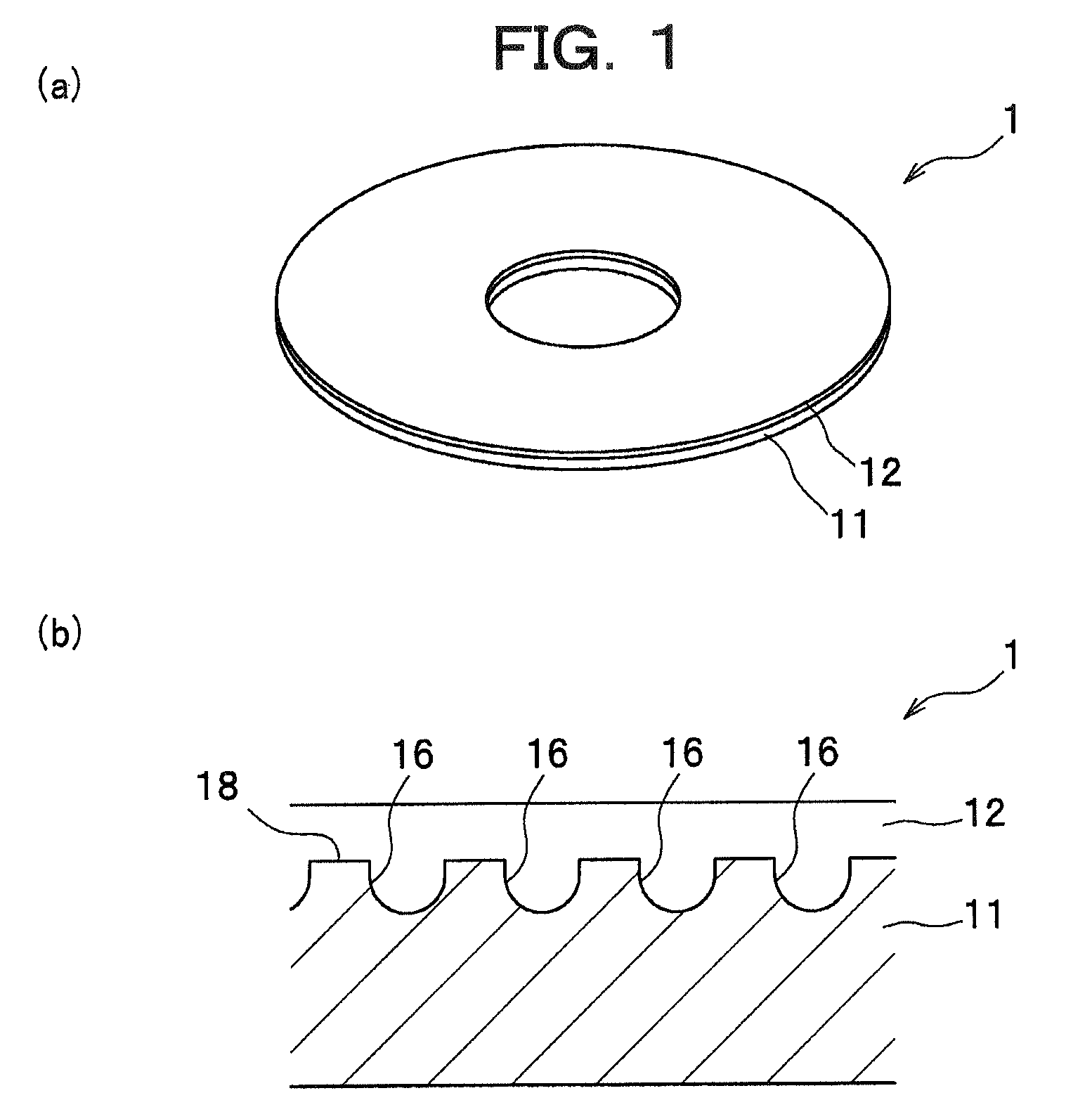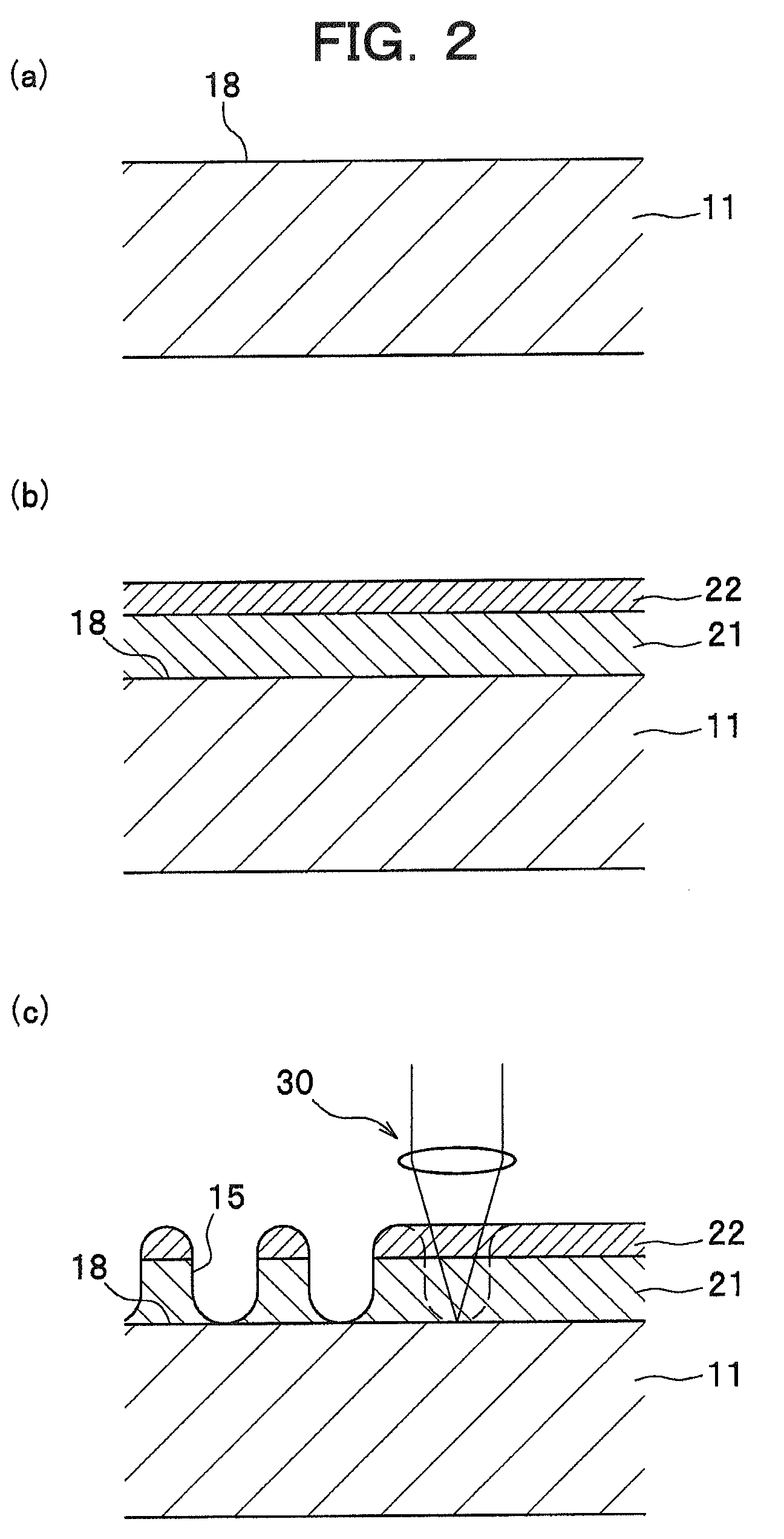Method for manufacturing medium on which information is recorded in pit pattern
a manufacturing medium and information technology, applied in the field of manufacturing a medium on which, can solve the problems of complicated manufacturing process, possible removal of pits and projections of the layer, etc., and achieve the effect of prolonging the preservation period
- Summary
- Abstract
- Description
- Claims
- Application Information
AI Technical Summary
Benefits of technology
Problems solved by technology
Method used
Image
Examples
example
[0114]One example implemented with which the advantageous effects of the present invention have been confirmed will be described below.
[0115]In the example, a substrate similar to that of the above-described embodiment was manufactured. The substrate was formed like a disc, and a dye-containing layer (recording material layer) having a thickness of approximately 100 nm and a barrier layer were formed thereon as an etching mask, and RIE was carried out.
[0116]Details are as follows.
[0117]Substrate
[0118]
Material:SiliconThickness: 0.5 mmOuter diameter:101.6 mm (4 inch)Inner diameter: 15 mm
[0119]Dye-Containing Layer (Recording Material Layer)
[0120]2 g of the dye-containing material given by the following chemical formula was dissolved in 100 ml of TFP (tetrafluoropropanol) solvent, and the resulting solution was spin coated. In this spin-coating process carried out with a dispense-start rotation speed of 500 rpm and a dispense-end rotation speed of 1,000 rpm, a coating liquid was dispen...
PUM
| Property | Measurement | Unit |
|---|---|---|
| oscillation wavelength | aaaaa | aaaaa |
| oscillation wavelength | aaaaa | aaaaa |
| oscillation wavelength | aaaaa | aaaaa |
Abstract
Description
Claims
Application Information
 Login to View More
Login to View More - R&D
- Intellectual Property
- Life Sciences
- Materials
- Tech Scout
- Unparalleled Data Quality
- Higher Quality Content
- 60% Fewer Hallucinations
Browse by: Latest US Patents, China's latest patents, Technical Efficacy Thesaurus, Application Domain, Technology Topic, Popular Technical Reports.
© 2025 PatSnap. All rights reserved.Legal|Privacy policy|Modern Slavery Act Transparency Statement|Sitemap|About US| Contact US: help@patsnap.com



